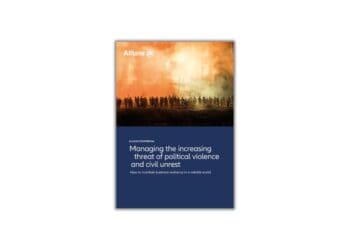It’s simple enough to voice what we know we believe and identify how it shapes our decisions. Unconscious biases are trickier, more elusive. Linda Henman discusses why it’s critical to close the gap between what we say and what we do.
Every decision starts with a belief. That is, we base our decisions on what we know to be true — what we believe. Sometimes, however, we believe something that isn’t true. Intellectually and emotionally, beliefs influence our behavior when facts and reason alone do not. Our early relationships, experiences and events create and influence our belief systems. However, when we fail to examine our beliefs and bring them to the conscious level, we run the risk that we will continue to base decisions on false or inaccurate inputs.
In most organizations, leaders give considerable thought to espoused values. These values may appear on a plaque in the foyer or on a mouse pad, but successful leaders also model them. Values play an important role in forming an organization’s culture when senior leaders agree, “This is the way we do things around here.”
Unconscious assumptions remain more mysterious, lying below the surface, undetected but ready to influence outcomes. In damaged organizations, unconscious biases commonly contradict the espoused values, causing confusion within and without the company. They also engender mistrust, suspicion and, eventually, the loss of customers and star performers.
Biases come in all kinds of shapes and sizes. The Dunning-Kruger effect causes people with low ability to overestimate themselves. Outcome bias describes the tendency to over-value the results of a decision and under-value its quality. It arises when leaders base a decision on the outcome of previous events, without regard to how the past events developed.
We shouldn’t confuse outcome bias with hindsight bias. Hindsight bias, also known as the I–knew-it-all-along phenomenon, refers to the common tendency to perceive past events as having been more predictable than they actually were. Unlike hindsight bias, outcome bias does not involve the distortion of past events.
Failing to seek disconfirming information often leads to yet another problem: confirmation bias. This tendency to search for, interpret, favor and recall facts that support previously held beliefs causes us to remember information selectively and to interpret it in a subjective way.
While heuristics, our mental shortcuts, can reduce the burden of decision-making and free up cognitive resources, they can also prove costly when they cause us to miss critical information or act on unjust biases. When we don’t discipline ourselves to hear differing opinions and to conscientiously consider alternatives, we act impulsively, make rash decisions or fail to take appropriate risks. These actions compromise innovation and growth and put us on the path to bad habits.
High-stakes decisions demand that we close the gap between what we say and what we actually do — the intersection of what we believe and how we behave. When we close this gap, we can begin to understand how our unconscious beliefs create biases that shape our world view — and our mindset.
Sometimes we remain aware of our biases but allow them to influence our decision-making. At least we know we’re out on a limb when we do this. At other times, however, biases lurk around in our unconsciousness, causing us to make decisions based on flawed data. Until and unless we drag these preconceptions into our conscious decision-making, we put good sense at risk. On the other hand, when we actively examine our attitudes, biases, beliefs and values, we give others a reason to trust us, and we trust ourselves better too.



 Dr. Linda Henman is one of those rare experts who can say she’s a coach, consultant, speaker, and author. For more than 30 years, she has worked with Fortune 500 Companies and small businesses that want to think strategically, grow dramatically, promote intelligently, and compete successfully today and tomorrow. Some of her clients include Emerson Electric, Boeing, Avon and Tyson Foods. She was one of eight experts who worked directly with John Tyson after his company’s acquisition of International Beef Products, one of the most successful acquisitions of the twentieth century.
Linda holds a Ph.D. in organizational systems and two Master of Arts degrees in both interpersonal communication and organization development and a Bachelor of Science degree in communication. Whether coaching executives or members of the board, Linda offers clients coaching and consulting solutions that are pragmatic in their approach and sound in their foundation—all designed to create exceptional organizations.
She is the author of Landing in the Executive Chair: How to Excel in the Hot Seat, The Magnetic Boss: How to Become the Leader No One Wants to Leave, and contributing editor and author to Small Group Communication, among other works.
Dr. Henman can be reached at
Dr. Linda Henman is one of those rare experts who can say she’s a coach, consultant, speaker, and author. For more than 30 years, she has worked with Fortune 500 Companies and small businesses that want to think strategically, grow dramatically, promote intelligently, and compete successfully today and tomorrow. Some of her clients include Emerson Electric, Boeing, Avon and Tyson Foods. She was one of eight experts who worked directly with John Tyson after his company’s acquisition of International Beef Products, one of the most successful acquisitions of the twentieth century.
Linda holds a Ph.D. in organizational systems and two Master of Arts degrees in both interpersonal communication and organization development and a Bachelor of Science degree in communication. Whether coaching executives or members of the board, Linda offers clients coaching and consulting solutions that are pragmatic in their approach and sound in their foundation—all designed to create exceptional organizations.
She is the author of Landing in the Executive Chair: How to Excel in the Hot Seat, The Magnetic Boss: How to Become the Leader No One Wants to Leave, and contributing editor and author to Small Group Communication, among other works.
Dr. Henman can be reached at 






